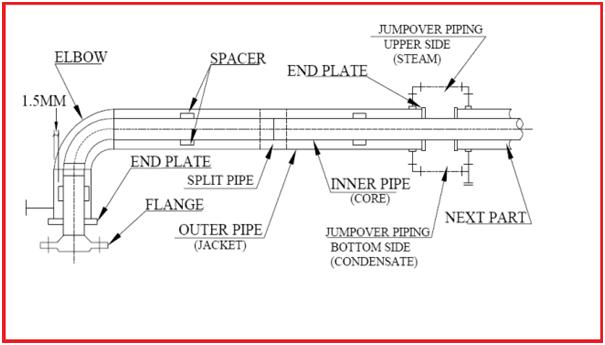Lubrication is the unsung hero of the industrial world, ensuring the seamless operation of countless machines and mechanisms that power our modern lives. While traditional oil-based lubricants have long been the norm, a lesser-known yet highly effective alternative has been quietly making its mark – graphite. In this article, we delve into the fascinating realm of lubrication, exploring the remarkable attributes of graphite that position it as a superior lubricant compared to oil.
What is Lubrication?
Before we dive into the graphite vs. oil debate, let’s first grasp the essence of lubrication. At its core, lubrication involves reducing friction between surfaces in relative motion, thereby minimizing wear and tear, heat generation, and energy loss. A good lubricant possesses several key properties: low friction coefficient, high load-bearing capacity, stability at varying temperatures, and resistance to degradation.
What are Oil Lubricants?
Oil lubricants, commonly referred to as lubricating oils or simply “oils,” are substances used to reduce friction and wear between moving parts in machinery and mechanical systems. They play a crucial role in ensuring the smooth operation, longevity, and efficiency of various industrial, automotive, and other mechanical applications.
Lubricating oils are formulated to provide a protective layer between surfaces that are in relative motion, such as gears, bearings, pistons, and other components. This layer of oil prevents direct metal-to-metal contact, which would lead to increased friction, heat generation, and wear. By creating a barrier between surfaces, lubricating oils effectively minimize friction and dissipate heat, thus helping to prevent premature wear and damage.
Key Characteristics of Lubricating Oils:
- Viscosity: Viscosity refers to an oil’s resistance to flow. Different applications require oils with specific viscosity levels to ensure proper lubrication. Thicker oils are used for heavy-duty machinery, while lighter oils are preferred for high-speed applications.
- Temperature Stability: Lubricating oils must maintain their properties across a range of temperatures. They should resist thinning out at high temperatures or thickening at low temperatures, ensuring consistent lubrication.
- Film Strength: The ability of an oil to create a strong and durable protective film between surfaces is crucial for preventing wear, especially under heavy loads.
- Additives: Many lubricating oils contain additives that enhance their performance. These additives can provide properties such as anti-wear protection, corrosion resistance, oxidation stability, and detergent/dispersant properties.
- Base Oils: The base oil is the primary component of lubricating oils and can be mineral oil derived from crude oil or synthetic oil produced through chemical processes. Synthetic oils often offer superior performance in terms of stability, temperature resistance, and longevity.
Parameters for a Good Lubricant
A good lubricant is essential for maintaining efficient and reliable operation of machinery and mechanical systems. To ensure optimal performance and longevity, lubricants should possess specific parameters and characteristics. Here are some key parameters for evaluating a good lubricant:
- Viscosity: Viscosity is one of the most critical properties of a lubricant. It determines the oil’s resistance to flow and affects its ability to form a protective film between moving surfaces. The viscosity should be appropriate for the specific application and operating conditions, ensuring proper lubrication and minimizing friction.
- Temperature Stability: A good lubricant should maintain its viscosity and lubricating properties across a range of temperatures. It should resist thinning at high temperatures and thickening at low temperatures to provide consistent and reliable lubrication.
- Load-Carrying Capacity: The lubricant should have the ability to withstand and distribute the load or pressure between moving parts, preventing metal-to-metal contact and reducing wear and tear.
- Film Strength: The lubricant’s ability to form a strong and durable protective film on surfaces is crucial for preventing direct contact, reducing friction, and minimizing wear.
- Chemical Stability: The lubricant should be chemically stable, resisting oxidation, degradation, and the formation of harmful deposits or sludge that can impair its performance.
- Compatibility: It’s important that the lubricant is compatible with the materials used in the machinery or system it will be applied to, as well as with any other lubricants or additives that might be present.
- Anti-Wear Properties: A good lubricant should provide effective anti-wear protection by minimizing surface damage and extending the lifespan of components.
- Corrosion Protection: The lubricant should help prevent corrosion of metal surfaces, especially in humid or corrosive environments.
- Detergency and Dispersancy: These properties help keep contaminants, such as dirt and particles, suspended in the lubricant, preventing them from settling on surfaces and causing damage.
- Water Resistance: In applications where water contact is possible, a good lubricant should provide water resistance to maintain its lubricating properties and prevent rust or corrosion.
- Foam Resistance: In applications where foaming might occur, such as in hydraulic systems, a good lubricant should have good foam resistance to ensure proper functioning.
- Environmental Considerations: Lubricants that are environmentally friendly, biodegradable, and have low toxicity are increasingly important in modern applications.
- Ease of Application: The lubricant should be easy to apply using common methods such as spraying, dripping, or circulation.
- Longevity and Maintenance Interval: A good lubricant should have a suitable lifespan and maintenance interval, reducing the frequency of lubricant changes and associated downtime.
- Cost-Effectiveness: While not a direct performance parameter, the cost-effectiveness of a lubricant over its lifecycle should be considered, taking into account factors like reduced wear, extended equipment life, and maintenance savings.
Why is Graphite a better lubricant than oil-based lubricants?
Graphite, a naturally occurring form of carbon, stands as a remarkable alternative to conventional oil-based lubricants. Here’s why:
- Dry Lubrication: Unlike oil which requires constant replenishment, graphite offers dry lubrication, eliminating the need for a continuous supply. It forms a solid film on the surfaces, providing a consistent and stable lubricating layer.
- Extreme Temperature Resilience: Graphite remains effective at an impressive range of temperatures. While oils can thin out or solidify under extreme conditions, graphite retains its lubricating properties, making it ideal for applications in both freezing cold and scorching hot environments.
- Minimal Friction: Graphite boasts an exceptionally low friction coefficient, meaning it allows surfaces to glide smoothly against each other with minimal resistance. This translates to reduced energy consumption, lower operating temperatures, and extended machinery lifespan.
- High Load-Bearing Capacity: Surprisingly, graphite excels in bearing heavy loads. Its layered structure allows the material to slide over itself, minimizing wear even under significant pressure.
- Chemical Inertness: Graphite is highly resistant to chemical reactions and does not readily degrade, ensuring stability and longevity in various industrial settings.
- Reduced Contamination: Oil-based lubricants can attract dust, dirt, and debris, potentially leading to abrasive wear. Graphite’s solid nature minimizes the accumulation of contaminants, maintaining cleaner and more efficient machinery.
- Cost-Effectiveness: Graphite’s longer lifespan and lower maintenance requirements contribute to cost savings in the long run, offsetting any potential higher initial costs.
Examples and Applications of Graphite as a Lubricant
Graphite’s unique properties have led to its adoption in a wide range of applications, including:
- Automotive Industry:
- Piston Rings: Graphite-coated piston rings are used in internal combustion engines to reduce friction between the piston rings and the cylinder walls, enhancing fuel efficiency and reducing wear.
- Wheel Bearings: Graphite can be applied as a dry lubricant on wheel bearings to reduce friction and extend their lifespan.
- Industrial Machinery:
- Gears: Graphite-based lubricants are used on gear teeth in high-temperature and high-load applications, such as in steel mills, to provide effective lubrication without attracting dust or contaminants.
- Conveyor Belts: Graphite can be applied to conveyor belts to reduce friction and wear in industries like mining and manufacturing.
- Aerospace:
- Spacecraft Components: Graphite-based lubricants are used in space applications where traditional lubricants might vaporize or degrade in the vacuum and extreme temperature conditions of space.
- Renewable Energy:
- Wind Turbines: Graphite lubrication is used in the main bearing and yaw bearing systems of wind turbines, where it offers effective dry lubrication and can withstand the demanding conditions of remote wind farms.
- Electronics:
- Electrical Contacts: Graphite-based lubricants can be used on electrical contacts to reduce friction, improve conductivity, and prevent arcing.
- Textile Industry:
- Textile Machinery: Graphite lubrication is used in the textile industry to reduce friction between fibers and machinery components, extending the life of equipment and improving production efficiency.
- Marine Industry:
- Ship Propulsion Systems: Graphite-based lubricants are used in ship propeller shafts and seals to reduce friction and wear, especially in seawater environments.
- Automated Manufacturing:
- Robotic Joints: Graphite lubrication can be applied to robotic joints and moving parts to ensure smooth motion and reduce the need for frequent maintenance.
- Food Processing:
- Bakery Equipment: Graphite lubrication is used in baking equipment to provide a dry, non-stick surface, reducing the need for oil-based lubricants and minimizing contamination risks.
- Medical Devices:
- Surgical Instruments: Graphite lubrication can be used on surgical instruments to reduce friction and enhance their performance during delicate procedures.
Graphite lubrication offers several advantages in these applications, including its ability to provide dry lubrication, resist high temperatures, and reduce the accumulation of contaminants. However, it’s important to note that the effectiveness of graphite lubrication can vary based on factors such as load, speed, and operating conditions. Proper selection, application, and maintenance are crucial to ensuring optimal performance and longevity when using graphite as a lubricant.
Is Graphite Lubricant Safe to Use?
Graphite lubricants are generally considered safe to use in various applications, but as with any substance, there are certain considerations and precautions that should be taken into account to ensure their safe and effective use. Here are some key points to consider regarding the safety of graphite lubricants:
- Health and Safety Precautions: Graphite itself is relatively inert and non-toxic, which makes it a safer alternative to some other lubricants. However, like any fine particulate material, inhalation of graphite dust or fumes should be minimized. Proper ventilation and the use of personal protective equipment, such as masks and gloves, are recommended when handling graphite lubricants in powder or aerosol form.
- Contaminant Risk: Graphite lubricants, especially in powdered or aerosol forms, can attract and hold onto airborne dust and debris. While this can reduce wear and friction between surfaces, it’s important to consider the potential for contamination, especially in environments where cleanliness is crucial, such as in certain manufacturing processes or sensitive electronic equipment.
- Application and Form: Graphite lubricants come in various forms, including powders, sprays, and solid lubricant coatings. The choice of form depends on the specific application and the level of convenience and control desired.
- Compatibility: Before using a graphite lubricant, it’s important to ensure its compatibility with the materials involved and any other lubricants or substances that may be present. Some materials may react with graphite under certain conditions.
- Application Techniques: Proper application techniques are important to ensure the effective and even distribution of the graphite lubricant. Improper application could lead to uneven lubrication or excessive buildup.
- Specific Applications: Consider the specific requirements of your application. While graphite is suitable for many scenarios, there may be situations where other lubricants, such as oils or synthetic lubricants, are more appropriate.
- Regulations and Standards: Depending on the industry and application, there may be regulations, standards, or guidelines that govern the use of lubricants, including graphite lubricants. It’s important to adhere to these regulations to ensure safety and compliance.
- Consult Manufacturer Guidelines: Manufacturers of graphite lubricants often provide guidelines and recommendations for safe and effective use. It’s advisable to consult these guidelines and follow the manufacturer’s instructions.
- Monitoring and Maintenance: Regular monitoring of the lubricant’s performance and the condition of the equipment is important to ensure that the lubricant is functioning as intended and that any issues are promptly addressed.
In summary, graphite lubricants can be safe and effective when used properly and in appropriate applications. It’s important to understand the specific requirements of your application, follow safety guidelines, and make informed decisions based on the recommendations of lubricant manufacturers and industry standards.
Conclusion
As industries continue to evolve and demand higher efficiency, reduced energy consumption, and increased sustainability, the importance of effective lubrication cannot be overstated. While oil-based lubricants have served us well for decades, graphite emerges as a formidable contender with its exceptional attributes. From its dry lubrication capabilities to its resilience in extreme temperatures and chemical inertness, graphite proves to be a lubricating marvel that promises to revolutionize various sectors. As research and innovation continue, it’s exciting to envision a future where graphite takes center stage, driving efficiency and sustainability to new heights.








![START-PROF Piping Stress Video Training Series [In-Depth] a1](https://whatispiping.com/wp-content/uploads/2019/02/a1.png)
Hello,
I am looking for a non-greasing lubricant. I am restoring old cameras and often the shutter and it related gears are stuck with old grease dust and what have you.
I experimented with one old camera and the results where pretty good. Some people warned that the graphite may attach to the lens of the camera and makes the photograph less good (spec etc on the negative)
What would be the best way to apply ?
Any advice is welcome
Regards Gert Jan Govers